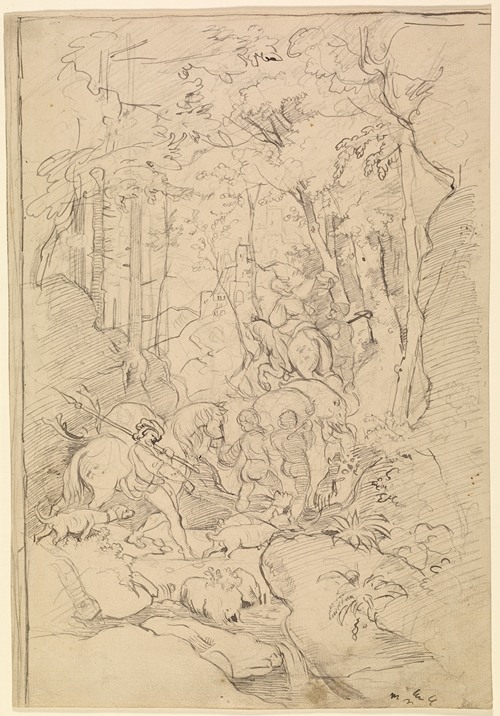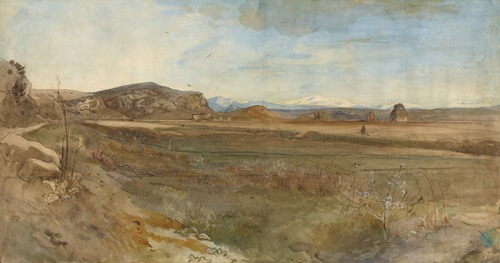
Franz Albert Venus was a German painter, draftsman and etcher. He is one of the most outstanding representatives of Dresden late romanticism. His most important works were created on his trips to Italy in 1866/67 and 1869 in the technique of oil studies and watercolors.
Venus' parents died very young. The father was court lackey of Amalia Marie Friederika Augusta, Princess of Saxony. The orphan, who was baptized as a Protestant, was placed in a Catholic orphanage and later attended the Catholic free school in his hometown. After leaving school in Easter 1856, he attended the Dresden Royal Academy of Fine Arts. From 1860 to 1866 he worked in the studio of the painter Ludwig Richter, whose favorite student he is considered to be. In 1861 he made with his painter friends Viktor Paul Mohn (1842-1911), Carl Wilhelm Müller (1839-1904) and Adolf Thomas(1834-1887) made a study trip through northern Bohemia, which was followed by more in the years to come. In these years his style is clearly based on that of Richter.
The two trips to Italy in the second half of the 1860s are central to the artistic development of Venus. From the summer of 1866, Venus was able to spend some time in Rome and the surrounding area with the support of the Saxon Princess. There, among other things, a number of drawings were created that were inked or watercolored by the artist and in which his stylistic peculiarities are expressed for the first time. At the same time, Venus is still moving geographically and stylistically in the wake of his teacher Richter. His oil painting Thunderstorm in the Roman Campagna (Acqua acetosa), created during this stay, was awarded a one-year academic scholarship in 1868. This enabled him, together with his friend Viktor Paul Mohn, to travel again. They traveled again to the places their teacher Ludwig Richter painted in the 1820s. The drawings and oil paintings created there show motifs from the area around Rome and from the valleys of the Anio and the Tiber.
While the small-scale watercolors and drawings still speak the language of early Romanticism, in his oil studies from Italy Venus develops an independent pictorial language that subtly uses the first impressionistic effects in its use of light. The Italian works by Venus form the finale of fifty years of Dresden Romanticism, which was primarily influenced by Ludwig Richter.
In 1870, after his return from Italy, Venus married Cäcilie Plaul and thus became brother-in-law to the illustrator Wilhelm Claudius and his painter friend Carl Wilhelm Müller. With the latter and their common teacher Ludwig Richter, Venus made a final study trip through northern Bohemia. The following year Venus died of pulmonary consumption . The Albert-Venus-Weg as a branch of the Ludwig-Richter-Straße in the Loschwitz district of Dresden is named after him.

